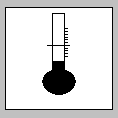| Garlic | [German version] |
Table of contents |
|
| General: | ||
| Product information | ||
| Packaging | ||
| Transport | ||
| Container transport | ||
| Cargo securing | ||
Product information
Product name
| German | Knoblauch |
| English | Garlic |
| French | Ail |
| Spanish | Ajo |
| Scientific | Allium sativum |
| CN/HS number * | 0703 20 00 |
(* EU Combined Nomenclature/Harmonized System)
Product description
Garlic is the bulb of the garlic plant and belongs to the lily family (Liliaceae). It is native to Asia Minor and India. The garlic bulb forms at the foot of the plant and has a broad, oval, flattened basal plate and up to 15 bulblets or „cloves“. The cloves are enclosed in a paper-like skin. In addition, the entire garlic bulb is surrounded by several dry, brittle, white to reddish layers of skin, which readily break up.
The typical garlic flavor and odor are produced by the essential oil allicin.
Oil content: 0.12 – 0.20% essential oils [1], in particular allicin.
Quality / Duration of storage
On acceptance of a consignment, care must be taken to ensure that the product is dry. Garlic must not be wet or covered with condensation; instead, it must be dry and parchment-like. The stems, the outer bulb skin and the skin around the individual garlic cloves must be completely dry.
Dry garlic may be kept for 6 – 7 months at temperatures of 0 – 1°C and 65 – 70% relative humidity.
Intended use
Garlic serves as a spice in particular for seasoning meat, sausage products and soups and is also used for pharmaceutical purposes due to its health-promoting and disinfecting action when applied externally.
Garlic is also further processed industrially into dry products, such as slices, granules or powder, or by distillation to produce garlic oil.
Figures
(Click on the individual Figures to enlarge them.)
 Figure 1 |
 Figure 2 |
 Figure 3 |
 Figure 4 |
 Figure 5 |
Countries of origin
This Table shows only a selection of the most important countries of origin and should not be thought of as exhaustive.
| Europe | Spain, France, Italy, Hungary, Greece, Turkey |
| Africa | Egypt |
| Asia | India, China, South Korea |
| America | USA (California), Argentina, Mexico |
| Australia |
Back to beginning
Packaging
Garlic is packaged, among other things, in wooden jointed boxes (17 kg) [1] and in 25 kg jute bags, baskets or chip baskets.
| Marking of packages | ||
 Keep dry |
 Keep away from heat (solar radiation) |
|
Back to beginning
Transport
Symbols
 General cargo |
 Temperature-controlled |
Means of transport
Ship, truck, railroad
Container transport
Refrigerated containers, actively ventilated containers, open-sided containers
Not suitable for closed standard containers, as garlic bulbs, like onions, consume large quantities of oxygen and special ventilation measures have therefore to be implemented. Open-sided containers are more suitable, provided that the tarpaulins are rolled up, and wooden dunnage or pallets on the floor of the container improve ventilation. Particular care must be taken on board and at the port of destination to provide adequate weather protection and, where applicable, to roll down the tarpaulins if it starts to rain.
Cargo handling
In damp weather (rain, snow), the cargo must be protected from moisture, since this may lead to self-heating, premature sprouting and root growth.
Stowage factor
| 4.00 m3/t (jointed wooden boxes, 17 kg) [1] | |
| 2.65 m3/t (bags) [11] | |
| 2.55 – 2.75 m3/t (bags) [14] |
Stowage space requirements
Cool, dry, good ventilation
Segregation
Marker pen, oil crayon, fiber rope, thin fiber nets
Cargo securing
In order to ensure safe transport, the packages must be stowed and secured in the means of transport in such a manner that they cannot slip, tip or shift during transport. If loss of volume and degradation of quality are to be avoided, the packages must not be damaged by other articles or items of cargo.
Back to beginning
Risk factors and loss prevention
RF Temperature
Garlic requires particular temperature, humidity/moisture and ventilation conditions (SC VII) (storage climate conditions).
A written cooling order must be obtained from the consignor before loading is begun. This order must always be complied with during the entire transport chain.
Travel temperature: 10°C [1]
When chilled goods are properly dry, the travel temperature is 0 – 1°C [14]
At temperatures < 0°C, garlic cloves suffer chilling damage, while at temperatures > 15°C a rapid increase in respiration may be observed.
At temperatures of 20 – 30°C and relative humidities > 75% there is a risk of spoilage: the garlic bulbs then rot or begin to sprout.
Back to beginning
RF Humidity/Moisture
Garlic requires particular temperature, humidity/moisture and ventilation conditions (SC VII) (storage climate conditions).
| Designation | Humidity/water content | Source |
| Relative humidity | 70% | [1] |
| Water content | 63 – 64% | [1] |
| Maximum equilibrium moisture content | 65% | [1] |
On loading, garlic must not be wet or covered with condensation, but must instead be dry and parchment-like. Exposure to moisture, e.g. seawater, rain or condensation water, encourages self-heating of the product together with sprouting and root growth.
With the onset of rain or snowfall, cargo handling of conventionally shipped goods must be stopped immediately.
Evaporation losses entail losses of essential oils, sugar and vitamins.
Back to beginning
RF Ventilation
Garlic requires particular temperature, humidity/moisture and ventilation conditions (SC VII) (storage climate conditions).
Recommended ventilation conditions: air exchange rate: 25 changes/hour (airing) with continuous supply of fresh air.
As garlic bulbs, like onions, consume large quantities of oxygen due to their metabolic activity and have a tendency to self-heating, it is important to dissipate the CO2 gas arising during respiration by appropriate ventilation measures and to ensure cooling by supplying fresh air if the cargo becomes heated.
With chilled goods, the fresh air supply must be controlled in such a way that the CO2 content of the circulating hold/container air does not exceed 0.4 vol.%.
Back to beginning
RF Biotic activity
Garlic displays 2nd order biotic activity.
Garlic is a living organ in which respiration processes predominate, because its supply of new nutrients has been cut off by separation from the parent plant.
Care of the cargo during the voyage must be aimed at controlling respiration processes (release of CO2, water vapor, ethylene and heat) in such a way that the cargo is at the desired stage of ripeness on reaching its destination.
In addition, garlic bulbs must be protected from light during the voyage, as there is otherwise an increased risk of sprouting => in the case of conventional loading, put up awnings if the hatches are opened when at sea.
Back to beginning
RF Gases
Due to the increased intensity of respiration and associated oxygen consumption, garlic has a tendency to self-heating and to elevated CO2 concentrations in the hold. To counter these phenomena, particularly extensive ventilation measures are required.
With chilled goods, the fresh air supply must be controlled in such a way that the CO2 content of the circulating hold/container air does not exceed 0.4 vol.%.
The sensitivity of garlic to ethylene is low. The rate of ethylene production is very low, being below 0.1 µl/kg*h [16].
Back to beginning
RF Self-heating / Spontaneous combustion
Oil content: 0.12 – 0.20% essential oils [1], in particular allicin.
Allicin breaks down into diallyl disulfide, which produces the pungent garlic odor/flavor.
As a consequence of the respiration process in garlic bulbs, a tendency to self-heating, CO2 concentration and high O2 consumption may be observed. Self-heating is associated with losses of essential oils together with sugar and vitamins.
The risk of self-heating is further increased by exposure to excessively high storage temperatures and excessive moisture levels.
Back to beginning
RF Odor
| Active behavior | Garlic bulbs exude an unpleasant or pungent odor. An increase in odor intensity may indicate incipient self-heating. |
| Passive behavior | Garlic bulbs are highly odor-sensitive and should not be stowed together with hides or furs, bones or other animal products. |
Back to beginning
RF Contamination
| Active behavior | Garlic bulbs may produce dust during loading. |
| Passive behavior | Garlic bulbs are sensitive to contamination by dirt, fats and oils. |
Back to beginning
RF Mechanical influences
Garlic bulbs are sensitive to impact, as they break up easily. According to [13], it is necessary for garlic to be properly treated in the fields, before it is transported. If, in conjunction with high temperatures and high moisture levels, garlic is squashed during storage, rot may set in within a very short period.
Back to beginning
RF Toxicity / Hazards to health
Respiration may cause life-threatening CO2 concentrations or O2 shortages. Therefore, before anybody enters the hold/container, it must be ventilated and a gas measurement carried out. The TLV for CO2 concentration is 0.49 vol.%. Like onions, garlic bulbs consume large amounts of oxygen.
Back to beginning
RF Shrinkage/Shortage
Evaporation losses and the associated weight loss entail additional losses of essential oils, sugar and vitamins.
Back to beginning
RF Insect infestation / Diseases
Garlic bulbs may be infested by rats or mice. This may be the case even prior to loading, a fact which needs to be taken into account on acceptance of a consignment.
Back to beginning
